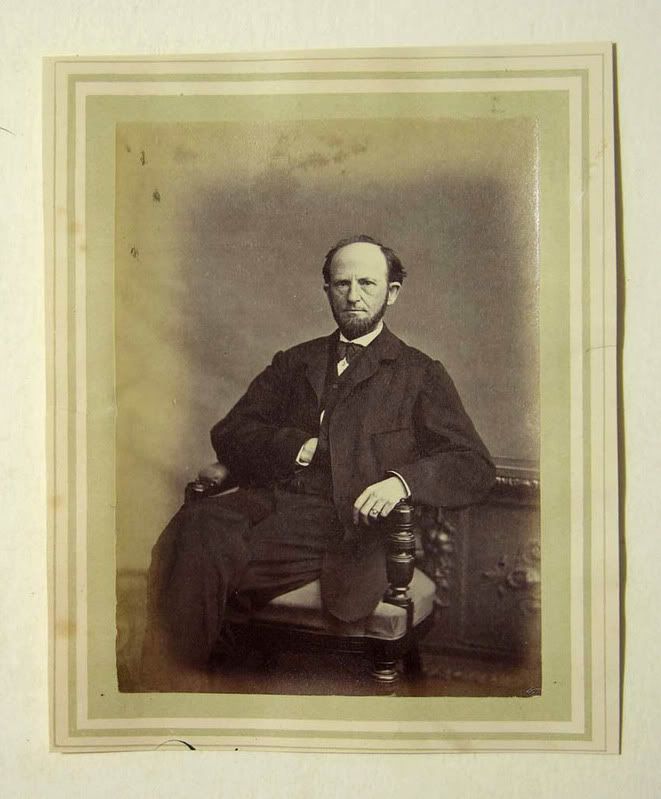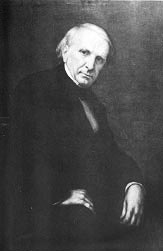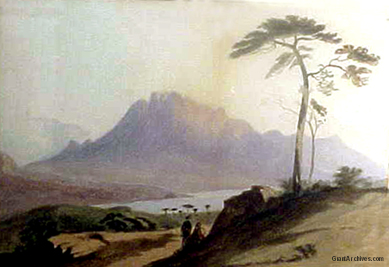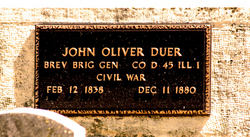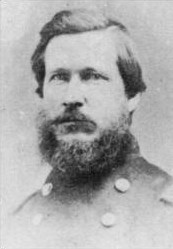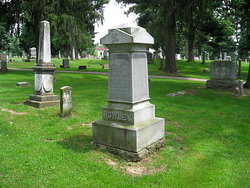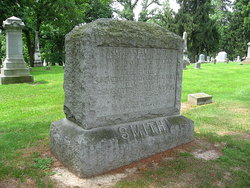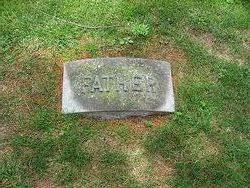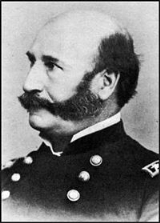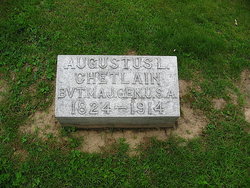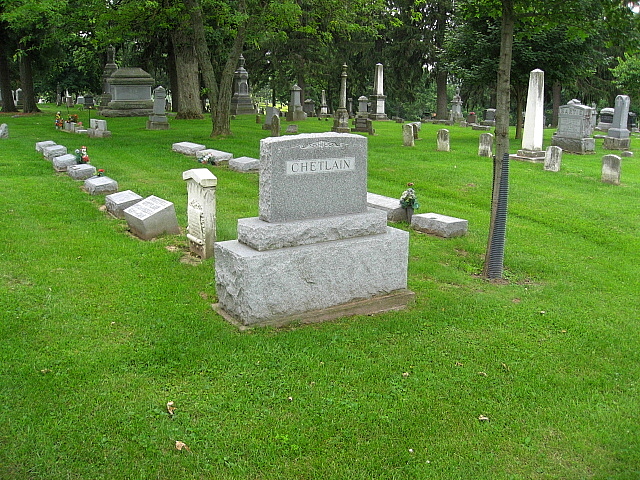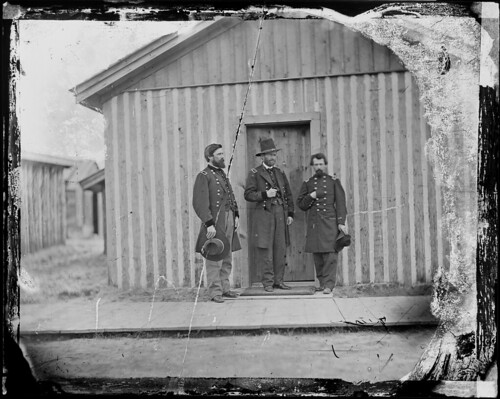 |
The quintessential Grant photograph
|
Grant as General
We left off last post discussing Grant pre-war, and the first year of the war. The next 3 years of his story will not take place in Galena, rather many spots around the nation that he is trying to save.
Grant's first battles during the Civil War centered on Cairo, Illinois, where the Ohio River runs into the Mississippi River. The Confederate Army was stationed in Columbus, Kentucky under General Leonidas Polk. Grant, who was headquartered at Cairo, was given an open order by Union General John C. Frémont to make demonstrations against the Confederate Army at Belmont. Taking 3,114 Union troops by boat, Grant attacked Fort Belmont on November 7, 1861. Initially taking the fort, his army was pushed back to Cairo by Confederate General Gideon J. Pillow. Though considered a defeat, the battle gave confidence to Grant and the Union Army. Following Beltmont, Grant moved Union forces down the Mississippi River to capture Confederate water fortresses. Grant's troops, in collaboration with the Union Navy under Andrew H. Foote, successfully captured Fort Henry on February 6, 1862 and Fort Donelson on February 16. Fort Henry, undermanned by Confederates and nearly submerged from flood waters, was taken over with few losses; however at Fort Donelson the Union Army and Navy experienced stiff resistance from the Confederate forces under General Pillow. Grant's initial 15,000 troop strength was increased by 10,000 reinforcements. Grant’s first attack on Fort Donelson was countered by Pillow's forces, pushing the Union Army into disorganized retreat eastward on the Nashville road. However, Grant was able to rally the troops; he resumed the offensive and the Confederates forces surrendered. Grant’s surrender terms were popular throughout the nation: “No terms except unconditional and immediate surrender.” With these victories, President Abraham Lincoln promoted Grant to major general of volunteers.
 |
| Grant's first picture after being appointed Lt. Gen. in 1864 |
The Union army, known as the Army of the Tennessee, under Grant had increased to 48,894 men and were encamped on the western side of the Tennessee River. On April 6, 1862 a determined full-force attack from the Confederate Army took place at the Battle of Shiloh; the objective was to destroy the entire Western Union offensive once for all. Over 44,699 confederate troops led by Albert Sidney Johnston and P.G.T. Beauregard, vigorously attacked five divisions of Grant’s army bivouacked nine miles south at Pittsburgh Landing. Aware of the impending Confederate attack, Union troops sounded the alarm and readied for battle, however, no defensive entrenchment works had been made. The Confederates struck hard and repulsed the Union Army towards the Tennessee River. Grant and Maj. General William T. Sherman were able to rally the troops and make a stand. After receiving reinforcement troops from Maj. Gen. Don Carlos Buell and Maj. Gen. Lew Wallace's missing division, Grant succeeded in stabilizing the Army of the Tennessee. Confederate General Johnston was killed in the battle on the first day of fighting. On April 7, Grant launched a costly counter-offensive and pursuit that forced the Confederate Army, now under P.G.T. Beauregard, to retreat to Corinth.
The battle was the costliest in the Civil War up until this time, having 23,746 combined Union and Confederate casualties. The carnage at Shiloh demonstrated to both Confederates and Unionists that the Civil War was both very serious and extremely costly. Shiloh was the first battle in the American Civil War with tremendous casualties and Grant received much criticism for keeping the Union Army bivouacked rather than entrenched. As a result, Grant's superior Maj. Gen Henry Halleck demoted him to second-in-command of a newly formed 120,000-strong Union Army.
 |
| Grant with his prized possession, his horse Cincinnatus |
Grant first campaigned to take Vicksburg by an overland route following a railroad in combination with a water expedition on the Mississippi led by Maj. Gen. William T. Sherman. Confederate cavalry raiders Bedford Forest and Earl Van Dorn stalled Grant's advance by breaking communications, while the Confederate army led by John C. Pemberton concentrated and repulsed Sherman's direct approach at Chickasaw Bayou. During the second phase to capture Vicksburg, Grant attempted a series of unsuccessful and highly criticized movements along bayou and canal water routes. Finally, in April 1863, Grant marched Union troops down the west side of the Mississippi River and crossed east over at Bruinsburg using Adm. David Porter's naval ships. Grant previously had implemented two diversion battles that confused Pemeberton and allowed the Union Army to cross the Mississippi River. After a series of battles and having taken a railroad junction near Jackson, Grant went on to defeat Confederate General John C. Pemberton at the Battle of Champion Hill. After Champion Hill, Grant made two costly direct assaults on the Vickburg fortess and finally settled for a seven week siege. Pemberton, who was in charge of the fortress, surrendered to Grant on July 4, 1863.
The Vicksburg Campaign was Grant’s greatest achievement up to this time, having opened the south to Chattanooga and gave the Union army access to the vital grainery supply in Georgia. The fall of Vicksburg in 1863 combined with the Union naval capture of New Orleans in 1862 gave the Union Army and Navy control over the entire Mississippi; having divided the Confederacy in two.
On November 23, 1863 the situation at Chattanooga was urgent. Grant had organized three armies to attack Bragg on Missionary Ridge and Confederate troops on Lookout Mountain. On November 24, Maj. Gen. William T. Sherman and four divisions of the Army of the Tennessee assaulted Bragg's right flank. Thomas and Army of the Cumberland, under order from Grant, overtook Confederate picket trenches at the base of Missionary Ridge. Maj. Gen. Hooker and the Army of the Potomac took Lookout Mountain and captured 1,064 prisoners. On November 25, Sherman continued his attack on Bragg's right flank on the northern section of Missionary Ridge. In response to Sherman's assault Bragg withdrew Confederate troops on the main ridge to reinforce the Confederate right flank. Seeing that Bragg was reinforcing his right flank, Grant ordered Thomas to make a general assault on Missionary Ridge. After a brief delay, the Army of the Cumberland, led by Sheridan and Wood, stormed over and captured the first Confederate rifle entrenchments. Without further orders, the Army of the Cumberland continued up hill and captured the Confederate's secondary entrenchments on top of Missionary Ridge; forcing the defeated Confederates into disorganized retreat. The victory at Chattanooga increased Grant's fame throughout the country. Grant was promoted to Lieutenant General, a position that had previously been given to George Washington and given to Winfield Scott as a brevet promotion. Grant was given charge of the entire Union Army. Grant gave the Department of the Mississippi to Maj. Gen. Sherman, and went east to Washington D.C. to make and implement an overall strategy in partnership with President Lincoln to finally win the Civil War. Grant was the only General consistently winning victories for the Union. The decisive 1863 Chattanooga battle opened Georgia and the heartland of the Confederacy to Union invasion by Maj. Gen. William T. Sherman.
 |
| A depiction of US Grant during the Civil War. |
In Washington D.C., President Lincoln met with Grant and discussed an overall "total war" military strategy to end the Civil War with a Union victory. The strategy consisted of combined military Union offensives attacking the Confederacy's armies, railroads, and economic infrastructures. The overall strategy was to keep the Confederate armies from mobilizing reinforcements within southern interior lines. Maj. Gen. William T. Sherman would attack Atlanta and Georgia, while the Army of the Potomac, led by Maj. Gen. George Meade with Grant in camp, would attack Robert E. Lee's Army of Virginia. Maj. Gen. Benjamin Butler was to attack and advance towards Richmond, going up the James River. Depending on Lee's actions, Grant would join forces with Butler's armies and be fed supplies from the James River. Maj. Gen. Franz Sigel was to capture the railroad line at Lynchburg, move east, and attack from the Blue Ridge Mountains. However, the efforts of both Sigel and Butler failed and Grant was left alone to fight Robert E. Lee in a series of bloody battles of attrition known as the Overland Campaign that finally ended in a stalemate siege at Petersburg. Lee's objectives were to prolong the war and discourage the Northern will to fight, keep Grant from crossing south of the James River, and protect Richmond from Union attack.
 |
| Grant with his council in Virginia during the Overland Campaign. Grant is seated far left on the bench nest to the tree writing a dispatch. |
After taking the month of April 1864 to assemble and ready the Union Army of the Potomac, Grant crossed the Rapidan River on May 4 and attacked Lee in the Wilderness, a hard-fought battle with many casualties, lasting three days. Rather than retreat as his Union predecessors had done, Grant flanked Lee's Army of Virginia to the southeast and attempted to wedge the Union Army between Lee and Richmond at Spotsylvania. Lee's army got to Spotsylvania first and a costly and lengthy battle began that lasted 13 days. During the battle, Grant attempted to break through Lee's line of defense at the Mule Shoe, which resulted in one of the most violent assaults during the Civil War, known as The Battle of the Bloody Angle. Unable to break Lee's line of defense after repeated attempts, Grant flanked Lee to the southeast east again at North Anna, a battle that lasted three days. This time the Confederate Army had a superior defensive advantage on Grant, however, due to sickness Lee was unable to lead the battle. Grant then maneuvered the Union Army to Cold Harbor, a vital railroad hub that was linked to Richmond, however, Lee was able to make strong trenches to defend a Union assault. During the third day of the 13-day Cold Harbor battle, Grant led a costly fatal assault on Lee's trenches, and as news spread in the North, heavy criticism fell on Grant, who was called "the Butcher", having lost 60,000 casualties in 30 days since crossing the Rapidan. Unknown to Robert E. Lee, Grant pulled out of Cold Harbor and stealthily moved his Army south of the James River, freed Maj. Gen. Butler from the Bermuda Hundred, and attacked Petersburg, Richmond's central railroad hub.After Grant and the Army of the Potomac had successfully crossed the James River undetected by Lee and rescued Maj. Gen. Butler from the Bermuda Hundred, Grant advanced the Union army southward to capture Petersburg. Confederate General P.G.T. Beauregard, in charge of Petersburg, was able to defend the city until Lee's veteran reinforcements arrived. Grant forced Lee into a long nine month siege of Petersburg and the Union War effort stalled. Northern resentment grew as the Copperhead movement led by Clement Vallandigham demanded that the war be settled through peace talks. During the Petersburg siege, Maj. Gen. William T. Sherman was able to take Atlanta, a victory that allowed President Lincoln to be reelected. Maj. Gen. Phil Sheridan had also defeated Confederate General Early in the Shenandoah Valley; saving Washington D.C. from capture. Lee had sent Early up the Shenandoah Valley to attack Washington D.C. and draw troops away from Grant's Army of the Potomac. Sheridan's cavalry, after Early was defeated, destroyed vital Confederate supply farms in the Shenandoah Valley. Grant was able to blow up part of Lee's trenches from an underground tunnel, however, the Union troops were disorganized and unable to break through Lee's entrenchments and capture Petersburg. On August 9, 1864 Lieut. Gen. Grant, who had just arrived at his headquarters in City Point, narrowly escaped certain death when Confederate spies blew up an ammunition barge moored below the city's bluffs. The enormous explosion, similar to the Petersburg mine, killed 47 men; 146 injured.
 |
| Grant and his son Jesse at City Point, Va. in 1864 |
As the war slowly progressed, Grant continued to extend Robert E. Lee's entrenchment defenses southwest of Petersburg, in an effort to capture vital railroad links. By August 21, 1864 the Union Army had reached and captured the Weldon Railroad. As Grant continued to push the Union advance westward towards the South Side Railroad, Lee's entrenchment lines became overstretched and undermanned. Finally in April 1865, Grant was able to break through Lee's weakened entrenchments and capture Richmond. Knowing that Maj. Gen. Sherman's army, who had cost vast economic destruction in the south, would eventually link up with Grant's Army, Confederates troops in Lee's trenches deserted to the Army of the Potomac. Disease and lack of supplies also weakened Lee's forces. After an unsuccessful Confederate assault on Fort Stedman, Lee retreated from Petersburg and attempted to link up with the remnants of Confederate General Joe Johnson's defeated army in order to continue the war, however, Union cavalry led by Maj. Gen. Phil Sheridan, a close friend of Grant, was able to stop the two armies from converging. Lee and the Army of Virginia reluctantly surrendered to Grant at Appomattox Court House on April 9, 1865. Grant gave generous terms; Confederate troops surrendered their weapons and were allowed to return to their homes on the condition they would not take up arms against the United States. Within a few weeks the Civil War was over.
On April 14, 1865, only 5 days after Grant's victory at Appomattox, President Lincoln was fatally shot by John Wilkes Booth at Ford's Theater. The President—who had been one of Grant’s staunchest supporters, had consulted with the general on military strategy, and had become a close friend—died the next morning. Grant and his wife were originally invited to accompany Lincoln to the theater, but they declined and instead took a train to Philadelphia. Grant was, at various points, a potential target in the Lincoln assassination plot. An unknown assailant allegedly attempted to break into Grant's railroad car; however, with the car securely locked and protected by porters the assailant fled. Upon returning to Washington, D.C. the following day and having learned that Lincoln was dead, Grant, became enraged and carelessly ordered arrests of paroled Confederate officers. Maj. Gen. Edward Ord, however, was able to calm the growing hysteria in Washington through the use of accurate army intelligence and persuaded Grant to reverse his arrest orders. Attending Lincoln's funeral on April 19, Grant stood alone and wept openly. Grant said of Lincoln, "He was incontestably the greatest man I have ever known."
Ulysses S. Grant was the most popular man in the United States after the American Civil War. After President Lincoln was assassinated in April, 1865, Grant became America's first four-star general. On July 25, 1866, Congress promoted Grant to the newly creat
ed rank of General of the Army of the United States, a form of the rank General of the Armies of the United States. He would also aid Congress, led by the Radicals, in their effort to reconstruct the South. Grant often disagreed with President Andrew Johnson's conservative approach during the Reconstruction Era of the United States. Grant was looked on as a popular national leader who could mend the nations wounds and bring in an era of peace. Elected President twice in 1868 and 1872 Grant's terms in office were filled with federal corruption scandals and sectional violence over the constitutional citizenship rights of African Americans. Grant, as President, supported the efforts of Congress to protect the Civil Rights of African Americans and was able for a few years to legally and militarily defeat the Ku Klux Klan. After Grant retired from the Presidency, he went on an uprecedented World tour visiting Europe, the Mid East, and Asia, returning by ship to San Francisco in June, 1879.
Return to Galena
 |
Grant's Home in Galena, a gift from 13 businessmen to Grant and his family when he returned on August 18, 1865.
|
 |
| Grant and his son Jesse outside their new home in Galena. |
Grant became a national hero following the Civil War. In August of 1865, Grant returned to his 'hometown' to a mass hysteria. At the ceremony, held downtown, Grant was deeded a new house on Bouthilier Street. The house was originally built by city clerk Alexander Jackson. 13 business men including Congressman Washburne paid $2,500 for the house, and it was completely furnished! Grant did not live in Galena for an extended period of time. He split his time for the first couple years between Galena and Washington, using Galena as a getaway. In 1868, when he was elected President of the United States, Grant learned of the results at the Washburne House and ran up the street to his house to greet guests to the early hours of the morning. Even though Grant lived in many places throughout his life he always said that Galena was his favorite place to live. The Grants sporadically visited their home in Galena including a visit before their World Tour in 1878. The last time Ulysses and Julia visited the house was in 1881 when they moved to Mount McGregor. Ulysses died in July 23, 1885 of throat cancer. His children would visit on occasion to celebrate the annual Grant birthday celebration in April. Julia died in 1902 in Washington DC, they are both entombed in Grant's Tomb in New York. The children deeded the house to the city in 1904, and the city handed it over to the state in 1931.
More on Ulysses Grant will be coming to this blog including information on his house, his children, his life in Galena, and much more.
 |
| Grant writing his memoirs in the final year of his life, 1885. |
